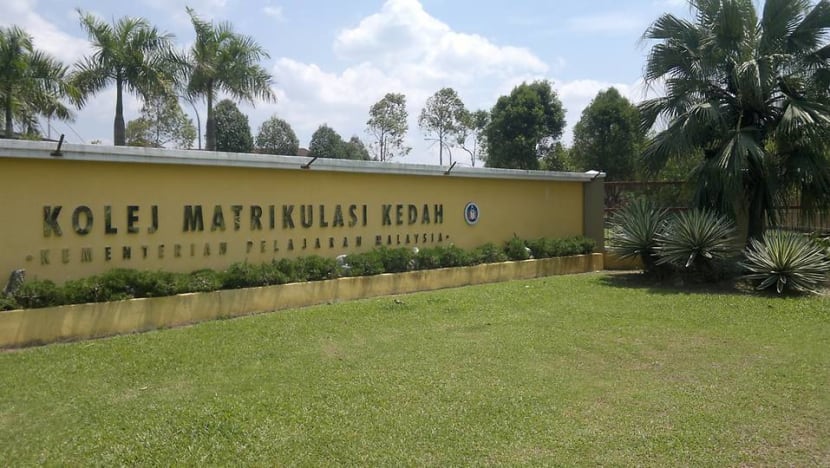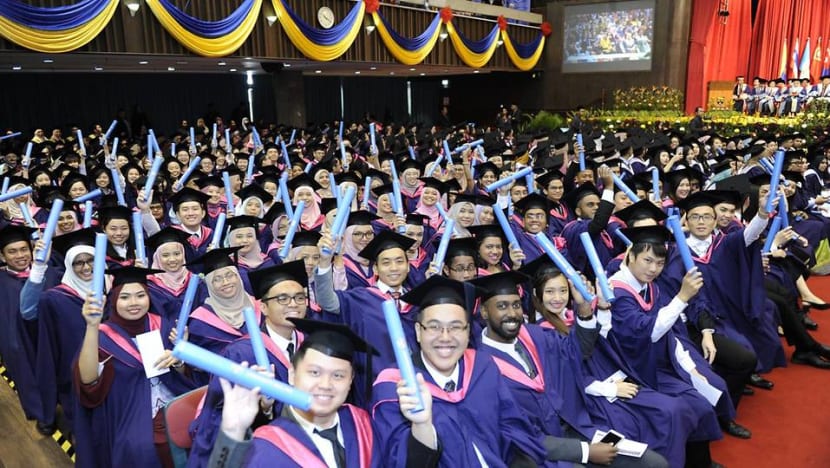commentary Commentary
Commentary: Time to relook racial quotas in Malaysia’s pre-university matriculation programme
What’s needed is a fine-tuning of Malaysia’s affirmative action policies towards a system of equitable opportunities in education, says University of Malaya’s Khoo Ying Hooi.

Malaysia's Ministry of Education building in Putrajaya. (Photo: Wikimedia Commons)
KUALA LUMPUR: The ethnic dimension of resource allocation in Malaysia has long been a concern, and this has coloured debates on issues in politics, the economy and education.
Despite constant calls to do away with racial preferences in policy-making, the Ministry of Education recently announced that the 90:10 quota favouring bumiputra students in the pre-university matriculation programme would be maintained.
Although the overall number of places for university enrollment has been increased, the decision to maintain the ethnic quota has triggered dissatisfaction among Malaysians, especially non-bumiputras who had put high hopes on the new Pakatan Harapan (PH) government to move away from the past and towards a system premised on meritocracy.
Globally, there are different views on affirmative action and Malaysia is no exception.
The matriculation programme, seen as a fast-track option to enter public universities, was originally fully reserved for bumiputras. Since 2002, a 10 per cent non-bumiputra quota has been put in place.
The announcement that this would be maintained has revived the debate surrounding affirmative action and meritocracy in Malaysia.
READ: Outcry over retaining ethnic quota for pre-university admission in Malaysia
While some defend the matriculation policy, others decry it on grounds that it is unfair to continue depriving non-bumiputras of one of the channels to tertiary education.
No one is denying the need for affirmative action in Malaysia, especially in education. The pressing question, however, is whether the policies should be fine-tuned in keeping with the current political and social context.
AFFIRMATIVE ACTION FOR A RACIALLY EQUITABLE SOCIETY
Affirmative action aims at levelling the playing field by giving those who have been underprivileged historically some assistance to be on a par with others. It should be emphasised that affirmative action should not be abused for political gains.

Both supporters and opponents generally agree that affirmative action in higher education is necessary in the context of Malaysia. However, over time, the process has deviated from its original goals.
For those against matriculation, the programme is widely seen as an easier channel for bumiputras to enter public universities. Many non-bumiputras are unhappy with what consequently seems like a restriction on educational opportunities for them.
The dissatisfaction is compounded by the fact that the alternative to this pre-university path – the Malaysian Higher School Certificate (STPM) – takes longer time to complete and is perceived to be more difficult.
Over the years, this has led to a widespread belief that non-bumiputras have to work much harder to compete with the bumiputras for the same access to a place in university.
On the other hand, supporters of affirmative action insist that these practices are necessary to advance a more racially equitable society.

In a media interview in early May this year, Prime Minister Mahathir Mohamad was quoted as saying: “We decided to have matriculation classes because we found Malays did not take Higher School Certificate and cannot enter university. So we provided a back door for them. It was entirely meant as a back door for the Malays.”
Although the pre-university matriculation route was officially designed for bumiputras, Dr Mahathir’s remarks seemed to suggest that it benefits only one community - Malaysian Malays.
However, the broader issue here should be promoting and protecting access to higher education to all. Indigenous people, especially those in Sabah and Sarawak, often remain marginalised from university access despite having bumiputra status.
READ: Malaysian Education Minister draws flak for comments linking ethnic quota to job discrimination
READ: The ghost of Borneo, talk of secession are back to haunt Malaysia, a commentary
In the long run, the current matriculation model is not sustainable.
One of the main deficiencies is that it continues to set back bumiputra capability development, due to the perceived lower standards of the matriculation programme. If this goes on, it could also dilute the academic quality of public universities.
The grievances of non-bumiputras who feel left out should also be addressed.
Since the 2018 general election that ended 61 years of Barisan Nasional (BN) regime, Malaysians have placed much hope on PH in building a new inclusive society. Such actions, which have been seen by many as a departure from PH’s election promise to do away with racial preferences to build a more equitable society, can provoke dissatisfaction.
READ: Almost a year since Pakatan Harapan swept into government, has Malaysia lost its mojo for reform? A commentary
RIGHTS-BASED APPROACH SHOULD BE THE WAY FORWARD
Education is a universal human right, and after 61 years, it is high time to prioritise equitable access to higher education for all Malaysians.
The bumiputra privilege has been embedded in Malaysia for decades and eliminating it altogether is not a feasible or desirable move.
Although affirmative action may be necessary to jumpstart aid for marginalised communities, such quotas should be a temporary measure. More work is needed to evaluate the effectiveness of these programmes and design better policies that tackle the root of inequality.

Thus far, little is known about the efficacy of these existing programmes. To be sure, Malaysia is not the only country in the world that practices affirmative action in education, but its multiracial context has made it more challenging.
It’s also worth reviewing affirmative action after it’s been in place for so many decades, to see whether its definition in the context of Malaysia needs to be expanded to be more inclusive, given that it has been primarily based on race in practice.
READ: Online petition calling for removal of Malaysia's Education Minister gains traction
The new government has to bear in mind how it handles the matriculation policy will set the tone for its approach in tackling disparity in the country.
A rights-based approach that emphasises equity in opportunities is needed in order to create an environment that discourages discrimination and promotes equality and inclusivity, without affecting the quality of education.
As a compromise, there have been suggestions that ethnic quota can stay, but with improvements made on the criteria, such as prioritising the very poor, the B40 (bottom 40 per cent of households) and people in the rural areas, including the indigenous people.
Dr Mahathir’s Shared Prosperity 2030 economic model, which has the same aspiration as the United Nation’s Sustainable Development Goals (SDGs), should not be just a vision to reduce disparities between races or economic classes. It should also emphasise equal opportunities for all in a holistic manner.
Dr Khoo Ying Hooi is Deputy Head of Department and Senior Lecturer at the Department of International and Strategic Studies, Faculty of Arts and Social Sciences, University of Malaya.












